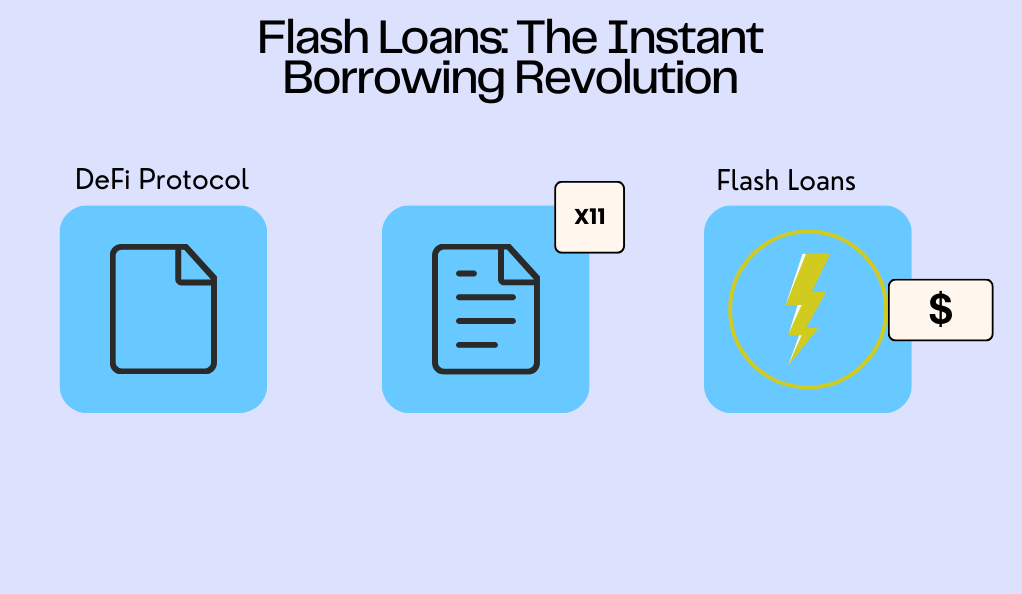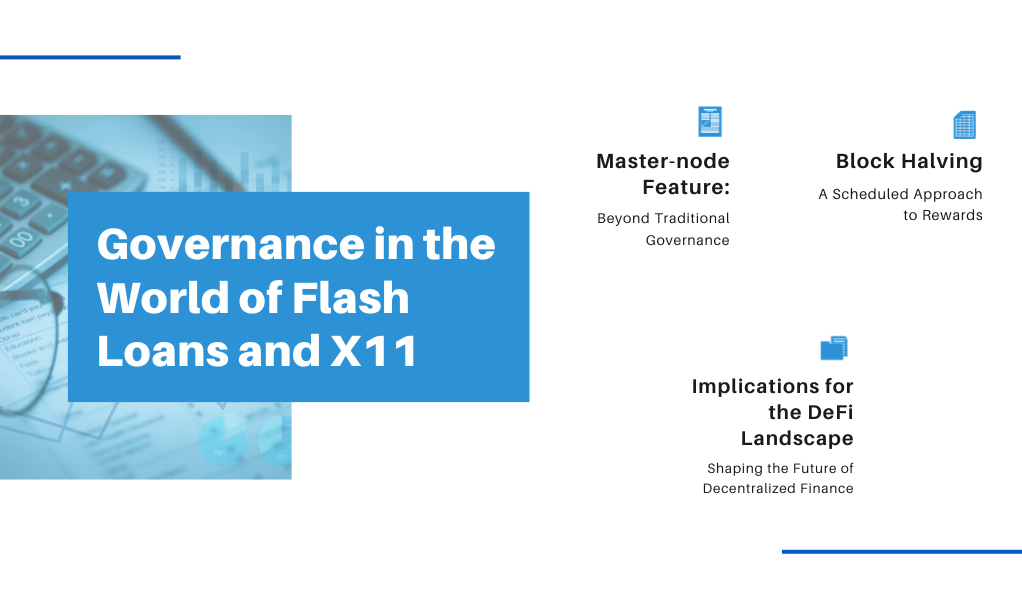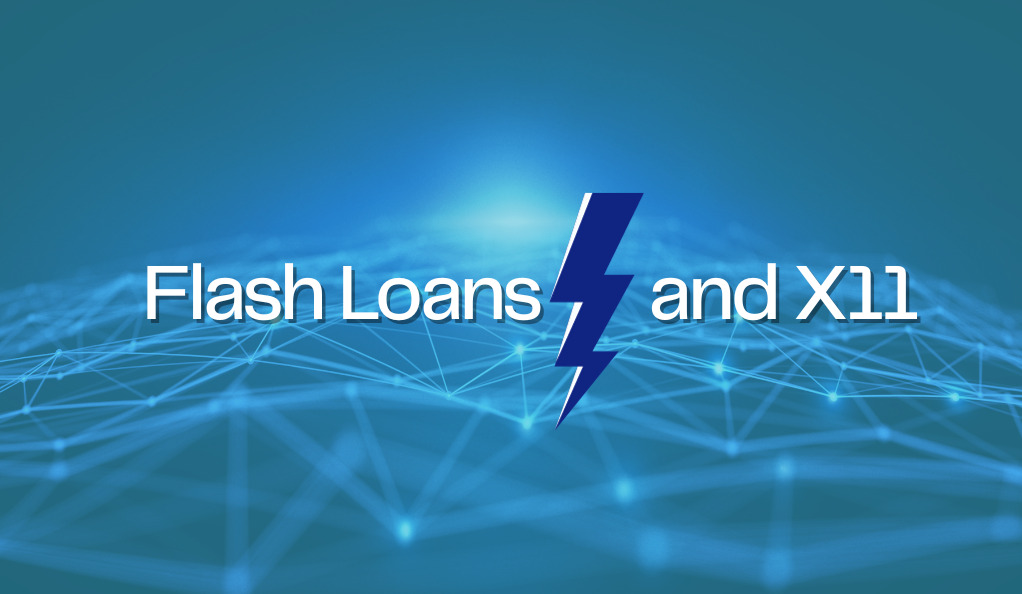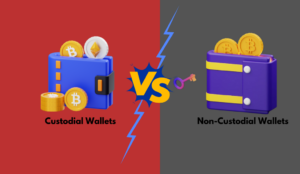In the rapidly evolving world of decentralized finance (DeFi), two terms have recently captured the attention of both enthusiasts and experts alike: Flash Loans and the X11 algorithm. As we delve deeper into the intricacies of these concepts, it becomes evident that they are not just fleeting trends but pivotal innovations that could redefine the future of DeFi.
Flash Loans: The Instant Borrowing Revolution
Flash Loans have emerged as a groundbreaking feature in the DeFi landscape. At its core, a Flash Loan is a type of uncollateralized loan that allows users to borrow assets without any upfront collateral. The catch? The loan must be repaid within the same transaction block. If not, the transaction is reverted, ensuring that the lender always gets their money back.

This mechanism offers a plethora of opportunities, especially for arbitrageurs. They can capitalize on price discrepancies across different exchanges without needing a significant capital upfront. However, with great power comes great responsibility. The instantaneous nature of Flash Loans also means that they can be exploited if not implemented securely, leading to potential vulnerabilities in DeFi protocols.
| Advantages of Flash Loans | Challenges of Flash Loans |
|---|---|
| No upfront collateral needed | Potential for protocol exploits |
| Enables efficient arbitrage | Requires in-depth technical knowledge |
| Facilitates complex financial operations | Risk of transaction failure if not repaid within the same block |
X11 Algorithm: A New Era of Security and Efficiency
While Flash Loans are revolutionizing borrowing mechanisms, the X11 algorithm is enhancing the security and efficiency of blockchain networks. Originally designed for the cryptocurrency Dash, X11 is a chained hashing algorithm that uses a sequence of eleven scientific hashing algorithms. This multi-layered approach ensures enhanced security against potential threats.
One of the standout features of X11 is its energy efficiency. Unlike traditional Proof-of-Work (PoW) algorithms that are energy-intensive, X11 is designed to provide a cooler and quieter mining experience. This not only reduces the environmental impact but also extends the lifespan of mining hardware.
Furthermore, the X11 algorithm is ASIC-resistant, meaning it prevents the dominance of ASIC miners, ensuring a more decentralized and equitable mining landscape.
| Benefits of X11 Algorithm | Limitations of X11 Algorithm |
|---|---|
| Enhanced security with chained hashing | Initial complexity in implementation |
| Energy-efficient mining | ASIC-resistance can be temporary |
| Equitable mining landscape | Might require frequent updates for optimal security |
Both Flash Loans and the X11 algorithm are testament to the innovative spirit of the DeFi community. As we continue to explore their potential and address their challenges, they hold the promise of shaping a more secure, efficient, and inclusive financial ecosystem.
The Rise of Algorithmic Governance in Blockchain
The digital realm of blockchain technology has always been a hotbed for innovation. One such innovation that has garnered significant attention is the concept of algorithmic governance. This approach to governance leverages algorithms to automate and streamline decision-making processes within a blockchain network.
Qnode’s Leap into Algorithmic Governance
Qnode’s blockchain journey is a testament to the transformative power of algorithmic governance. In December 2020, the Qnode development team proposed an algorithmic governance layer for their blockchain. The aim was to enhance the efficiency, transparency, and fairness of decision-making on the platform. This development was not only successful but also poised for deployment on the Ethereum network. However, the increasing miners’ fees on the ERC20 platform prompted a strategic pivot. To address concerns related to network fees and community convenience, the team decided to transition to the Binance Smart Chain.
Binance Smart Chain: A Strategic Move
The Binance Smart Chain (BSC) has rapidly become a preferred choice for many DeFi projects, primarily due to its lower transaction fees and faster transaction speeds compared to Ethereum. For Qnode, this move was not just about cost-saving; it was a strategic decision to align with a platform that resonated with their vision and community’s needs. The transition to BSC also showcased Qnode’s adaptability and commitment to delivering the best possible experience for its users.
Bootstrap Development: A Community-Centric Approach
One of the standout aspects of Qnode’s development journey was its bootstrap approach. Instead of relying on external funding or venture capital, the project was built solely on team funding. This not only ensured complete autonomy in decision-making but also underscored Qnode’s commitment to its community. By prioritizing community needs and network fees, Qnode showcased a development model that was both sustainable and community-centric.
In the ever-evolving landscape of blockchain and DeFi, algorithmic governance stands out as a beacon of hope for a more organized, efficient, and democratic future. As projects like Qnode continue to innovate and adapt, the promise of a decentralized yet structured digital economy becomes increasingly tangible.
Understanding the Algorithmic Bridge
The world of blockchain is replete with complex systems and mechanisms, and among them, the concept of the ‘Algorithmic Bridge’ stands out as a pivotal innovation. This bridge serves as a conduit, seamlessly connecting disparate blockchain networks and facilitating the smooth transfer of data and assets.
Qnode Blockchain and the X11 Algorithm
At the heart of the Qnode blockchain is the X11 algorithm, a standalone system renowned for enabling hardware mining and establishing a masternode tier. This tier is crucial for ensuring the security and integrity of the network. With an impressive algorithmic lifetime averaging 65 years, the Qnode blockchain is projected to hit a final calculated supply of 24,624,000 QNC. As of recent data, the network boasts over 82 masternodes and a robust network of miners, forging 50 QNC per block with a cap of 288 blocks per day.
Decentralized Finance and the Algorithmic Formulae
The integration of Decentralized Finance (DeFi) into the Qnode blockchain was no small feat. It required a meticulous approach to developing algorithmic formulae that would ensure the seamless operation of the supply chain. One such formula is the Inter-chain Defi Ratio (IDr), an algorithmic backing ratio of QND to QNC. This ratio is pivotal in determining the value and exchange dynamics within the network.
Another key metric is the Total Defi Supply (TDs), which represents the total supply mintable in the smart contract. With a calculated fixed supply of Qnode.Defi (QND) at 7,695,000 QND, it’s evident that the Qnode team has put significant thought into ensuring a balanced and sustainable ecosystem.
The Future of Inter-chain Operations
The Qnode.Defi mining pool, set to be deployed via the Inter-chain bridge, is backed by the Qnode blockchain and operates based on determined governance. This inter-chain bridge promises dual chain iteration between the Qnode Blockchain and the Defi contract via the X11 algorithmic bridge. Such a system ensures that the value of 1 QND will always equate to 3.2 QNC, providing stability and predictability for users and investors.
Furthermore, the introduction of Yield Farming or Liquidity Mining (LM) offers users the opportunity to earn Qnode.Defi (QND) tokens by providing liquidity on Decentralized Exchanges (DEXs) like Pancakeswap and Julswap. This not only incentivizes participation but also strengthens the overall liquidity and stability of the network.
The Algorithmic Bridge, underpinned by the X11 algorithm and DeFi integrations, represents a leap forward in blockchain interoperability and functionality. As we witness the continuous evolution of this space, such innovations pave the way for a more interconnected and efficient decentralized world.
Governance in the World of Flash Loans and X11

Governance plays a pivotal role in the blockchain ecosystem, ensuring that protocols and platforms remain transparent, decentralized, and aligned with the interests of their communities. In the context of Flash Loans and the X11 algorithm, governance takes on new dimensions and complexities.
1. Master-node Feature: Beyond Traditional Governance
The Master-node feature, inherent to the Qnode blockchain, introduces a unique form of governance. Operating under the PoSe (Proof of Service) functionality, Master-nodes not only contribute to the security of the native blockchain but also play a role in the broader DeFi ecosystem. These nodes facilitate key services including transaction privacy (PrivateSend), instant transactions (InstantSend), projectile voting, and the treasury system.
The dynamic nature of this governance model means that the difficulty adjusts with each block, ensuring that the network remains secure and resilient against potential threats. Furthermore, the concept of block halving introduces a systematic approach to adjusting rewards and incentives within the network.
2. Block Halving: A Scheduled Approach to Rewards
Block halving is a pre-determined event where the rewards for mining new blocks are halved. In the Qnode ecosystem, block halving is scheduled to occur at every 210,240 block count. This mechanism ensures a gradual reduction in the issuance of new tokens, introducing scarcity and potentially driving demand and value.
For instance, after the first block halving at height 210,241, the block reward will be divided by two, and its DeFi equivalence for iteration will adjust accordingly. This pattern continues through subsequent halvings, ensuring a predictable and transparent reduction in token issuance.
3. Implications for the DeFi Landscape
The integration of Flash Loans with the X11 algorithm and its unique governance model presents a myriad of opportunities and challenges for the DeFi landscape. On one hand, it offers users and developers a robust platform with enhanced security, predictable rewards, and innovative financial tools. On the other, it necessitates continuous monitoring, adaptation, and community engagement to address potential vulnerabilities and ensure the platform’s long-term sustainability.
The fusion of Flash Loans, the X11 algorithm, and a dynamic governance model exemplifies the potential of blockchain technology to revolutionize the financial sector. As these innovations continue to mature and integrate, they promise to shape a DeFi landscape that is more secure, transparent, and user-centric.
Investment Potential and Usability in the DeFi Landscape
The DeFi landscape, enriched by the integration of Flash Loans and the X11 algorithm, offers a plethora of investment avenues. As these technologies intertwine within the Qnode blockchain, they pave the way for both technological and financial advancements. Here’s a breakdown of the opportunities they present:
- Technological Advancements: The fusion of Flash Loans with the X11 algorithm has not only brought about technical innovations but also opened doors to diverse investment opportunities. As the DeFi sector burgeons, grasping these innovations becomes crucial.
- Algorithmic Mining: The New Gold Rush Moving beyond traditional mining, algorithmic mining employs mathematical algorithms like X11. This approach promises enhanced security, energy efficiency, and a fair reward distribution, making it a lucrative venture for investors, especially when synergized with Flash Loans.
- Onchain Mining: Masternodes Block Rewards Masternodes, integral to the Qnode blockchain, present a unique investment proposition. By holding a specific amount of tokens, investors can reap block rewards. The predictability of token issuance, coupled with scheduled block halvings, allows for strategic investment planning.
- Governance-based Yield Farming Yield farming has taken the DeFi world by storm. In the Qnode ecosystem, staking tokens in liquidity pools can yield Qnode.Defi (QND) tokens. This model not only fosters active governance participation but also promises a consistent passive income stream.
- Crypto Loans: The Future of Lending Building upon the concept of Flash Loans, the Qnode ecosystem envisions the dawn of crypto loans. These loans, which would use crypto as collateral, have the potential to redefine lending in the DeFi space, offering unparalleled flexibility, security, and competitive rates.
Conclusion: Navigating the Investment Landscape
The confluence of Flash Loans, the X11 algorithm, and the myriad of investment opportunities within the Qnode blockchain paints a promising picture for the future of DeFi. For investors, the key lies in understanding these innovations, staying updated with the platform’s developments, and strategically navigating the investment landscape. As the DeFi sector continues to evolve, platforms like Qnode stand at the forefront, offering a blend of technological prowess and investment potential.
At axerunners.com, our goal is to furnish well-rounded and trustworthy information regarding cryptocurrency, finance, trading, and stocks. Nonetheless, we avoid providing financial advice and instead encourage users to conduct their own research and meticulous verification.
Read More











